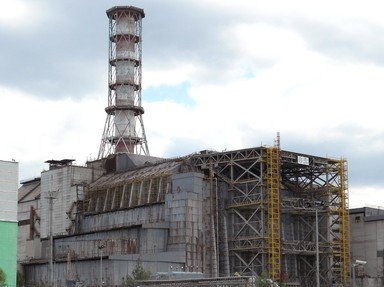Quiz Answer Key and Fun Facts
1. Chernobyl is a town located in present day Ukraine, formerly USSR. On Saturday, April 26th, 1986, at exactly 1:23 am, one of the reactors at the Chernobyl nuclear power plant exploded. What caused the reactor to explode?
2. What was the number of the reactor that exploded?
3. According to the Soviet government, what was the official number of casualties caused by the accident?
4. How many days did the Soviet government wait until formally announcing that the accident had, in fact, happened?
5. According to the name given to it in the days after the event, what colour is the 4-square-mile section of forest directly downwind from the power plant?
6. In a bid to clear highly radioactive core materials off the reactor building roof, the Soviet Army brought in troops. What was the maximum time the soldiers were permitted to stay on the roof while they were carrying out clearing duties?
7. What is the name of the stump of black stone-like material found in a maintenance corridor close to the underside of Reactor 4?
8. What is the nickname of the vast steel framework roughly 12 kilometres west of the Chernobyl plant, well-known and disliked by ham radio enthusiasts the world over?
9. From June to November 1986, a concrete and steel containment structure was thrown up over the ruins of Reactor 4. How was it usually known?
10. In February 2022, troops of the Russian Federation occupied the power station. What potentially fatal mistake did they proceed to make?
Source: Author
spaceowl
This quiz was reviewed by FunTrivia editor
trident before going online.
Any errors found in FunTrivia content are routinely corrected through our feedback system.
